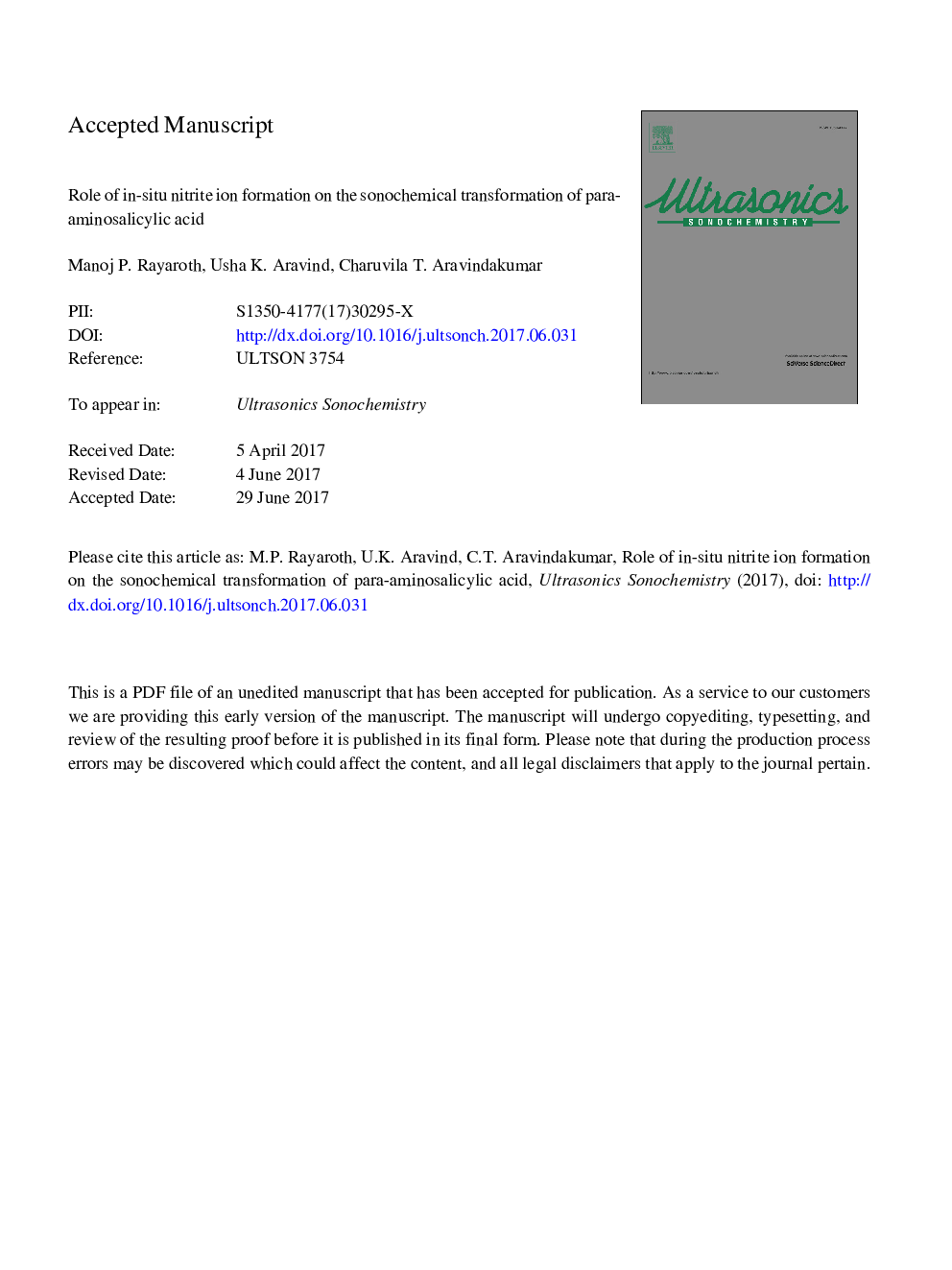| Article ID | Journal | Published Year | Pages | File Type |
|---|---|---|---|---|
| 5144444 | Ultrasonics Sonochemistry | 2018 | 28 Pages |
Abstract
The sonochemical transformation of para-aminosalicylic acid (PAS), a widely used antibiotic and an identified Emerging Pollutant (EP) under the class of Pharmaceuticals and Personal Care Products (PPCPs), have been investigated in aqueous medium. Ultrasound having frequency of 350Â kHz and power of 80Â W was utilized for the degradation of PAS. A complete degradation (100%) of PAS after 60Â min and about 83% of COD removal after 120Â min of sonication, were obtained. Fourteen intermediate products were identified using LC-Q-TOF-MS. On a comparison with UV/H2O2 method, it is understood that four products out of fourteen were nitro derivatives which are formed only in the sonolysis, and the rest are from hydroxyl radicals. The involvement of nitrite which is formed from the sonolysis of solution containing PAS, in the formation of the other four nitro products has been established from the control studies. Nitrite ion partially scavenge hydroxyl radical in the course of the reaction to form nitrite radical which is the reactive species for the production of nitro compounds. It is, therefore, proposed that in addition to hydroxyl radical, contribution of in-situ generated nitrite also plays an important role in the sonochemical transformation of PAS.
Related Topics
Physical Sciences and Engineering
Chemistry
Chemistry (General)
Authors
Manoj P. Rayaroth, Usha K. Aravind, Charuvila T. Aravindakumar,
